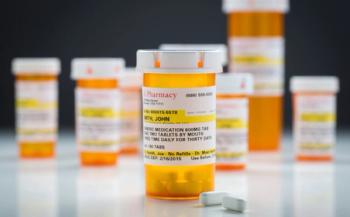
Amplifying the Patient Voice
Jo Fearnhead-Wymbs discusses how and why amplifying the patient voice is driving change in the industry for the better.
Patient engagement in drug development has evolved more rapidly than ever in recent years — patients are increasingly expecting to be able to input into the development of the medicines they will use and to be able to say what is important to them. In addition, increasing adoption of technology, social media and the proliferation of information online has ensured patients can be better engaged through channels they are more comfortable with.
This engagement has in many ways been historically viewed as a one-way street, with pharma making information available, outreaching, and pushing it out to patients through apps, social media, email, and patient portals. However, the conversation is changing. Patients don’t want to be passive when it comes to their care and their treatment options — they want to feel that their voice is being heard or they won’t feel engaged and satisfied with their healthcare.
For pharma companies and drug developers, this willingness to engage has created incredible opportunities to gather insights and data that can inform everything from drug development pipelines to clinical study design and even marketing.
Patients as partners — the driving force
Pharma has always been risk-averse and often falls behind other industries when it comes to innovation. This has certainly been the case with customer-engagement. Most other industries seek to understand their end user in great detail before developing a product. In the life sciences, discovery and R&D is often undertaken without the patient front and center. Notably, most pharmaceutical companies were initially founded by scientists and chemists, meaning the overall focus throughout drug development is centered around scientific discovery, rather than the ultimate patient impact. While this approach has led to some incredible progress, including cures and therapies for many diseases, there is still room to improve when it comes to better serving the needs of patients living with disease. The focus on personalized therapeutics that we’re now seeing in the development pipeline means that patient engagement is a must.
The influence of technology cannot be understated either. Data proliferation, secure communications platforms and collaboration tools have made gathering data from stakeholders easier than ever. This has coincided with and arguably facilitated a groundswell in patient engagement with individuals being more educated and having more access to pharma companies than ever.
Now, patients don’t want to just receive medication, they want to be partners in its development. In a survey of 3,200 patients conducted by the Boston Consulting Group,1 72% of respondents said ‘trials that reflect the real-world and outcomes that matter to them’ were a vital attribute of patient-centricity. 66% said that ‘seeking patient input’ was also highly important.
From a commercial perspective, understanding and using the patient voice in an organization offers competitive advantages when it comes to brand perception. Being perceived as a company that genuinely cares about patients' experiences is critical. The COVID-19 pandemic presents a unique opportunity for pharma companies to show their value. Historically, there has never been such high levels of collaboration between pharma, academia, healthcare providers and government and policy makers. The world is truly waiting for science to come to its rescue. By collaborating both with each other, with healthcare providers and with patients, pharma companies can shift the dialogue to one where their ethics, ingenuity and value to society are appreciated.
What does using the patient voice mean today?
Using the patient voice today means understanding, valuing, and using the information provided by patients at every stage of drug development, clinical trials, commercialization, and post-marketing approval.
The concept has evolved over the last 3-5 years, and pharma now really needs to engage with and ask patients directly about their experiences. Quantitative lab and trial data in isolation is no longer sufficient, a comprehensive understanding of patient relevant outcomes and patient experience in the real-world is essential and it can only come from patients themselves.
A key question for pharma companies to answer is how do they gather this data? Evolving methodologies in market research, patient-led advisory boards and steering committees all have pros and cons that companies will have to explore while still abiding by FDA guidance and other best practices. Online platforms enable stakeholders including patients, care givers and clinicians to contribute and guide the construction of clinical protocols. The approach has been incredibly successful as no physical limitations exist for the online applications which maximizes potential users and can shorten the time to protocol completion which decreases overall cost.
Regulatory approaches
When the concepts of patient engagement and using the patient voice were first lauded, there were concerns that there would be little to no ROI in such activity. Now, it is a huge risk not to engage with patients as in addition to the potential opportunity and need to course correct during drug development, there is also an expectation from regulators that they have been involved.
FDA emphasizes the importance of using patient perspectives to inform its decision-making process. It established the FDA Patient Representative Program in 1991, which provided patients with the opportunity to serve on an FDA Advisory Committee and launched the Patient-Focused Drug Development (PFDD) initiative to capture patients' perspectives on their disease and currently available treatments. The agency also conducted 24 disease-specific PFDD public meetings between 2012 and 2017. These multidisciplinary meetings saw key stakeholders gather information from patients about the impact of their disease and current therapies on daily life. The information was then published in a series of publicly available reports called “Voice of the Patient.”
The latest step to enhance patient engagement from FDA saw the launch of Project Patient Voice in June 2020. The pilot project consists of a publicly available website that shares information about patient-reported outcomes (PROs) from cancer clinical trials for marketed treatments. Initiated by the Oncology Center of Excellence (OCE), the project allows insightful PRO data to be more accessible to patients and their healthcare providers and better inform decision-making.
Similar trends are present in the EU. FDA and the European Medicines Agency (EMA) have a workgroup on patient engagement called the FDA/EMA Patient Engagement Cluster which allows the agencies to share best practices involving patients along drug and biologic regulatory lifecycles. There have also been good examples of cross-industry collaborations and public-private partnerships leading initiatives to influence and evolve FDA and EMA approaches. For example, the Innovative Medicines Initiative have a number of ongoing projects looking into patient involvement in research, patient preference analysis, and other key topics.
Embedding the patient voice not only speeds up study design as mentioned above, but also provides a fit-for-purpose clinical outcome assessment expected by regulators when they decide on market approval.
Drug approvals
Perhaps the biggest commercial advantage, and for many pharma companies the strongest indicator that they should be using the patient voice, is the increased likelihood of their drugs being approved.
Where patients have been involved, whether that’s through the gathering of Patient Experience Data (PED — which the FDA now must report on publicly when it considers drug applications), or during trial design — a drug is roughly 20% more likely to launch.2 In 2018, FDA's Center for Drug Evaluation and Research (CDER) approved 59 new molecular entities. Of those, 48 applications (81.4%) included a PED table within the review documentation.
Conclusion
The patient voice in pharma is no longer perceived as a “nice to have” with little tangible value. It has become a powerful development and regulatory strategy that improves the likelihood of market approval. It also positions drug development as a collaborative effort, with patient needs and outcomes prioritized by pharma companies throughout development, trials and commercialization.
As patients, who are often experts in their own diseases, become partners and increasingly work with pharma companies to co-create solutions, the industry will be better positioned to develop more effective, outcome-oriented therapies.
Jo Fearnhead-Wymbs is Vice President, Patient Engagement at
1. https://www.bcg.com/publications/2020/what-patients-want-is-pharma-delivering
2.
Newsletter
Lead with insight with the Pharmaceutical Executive newsletter, featuring strategic analysis, leadership trends, and market intelligence for biopharma decision-makers.




